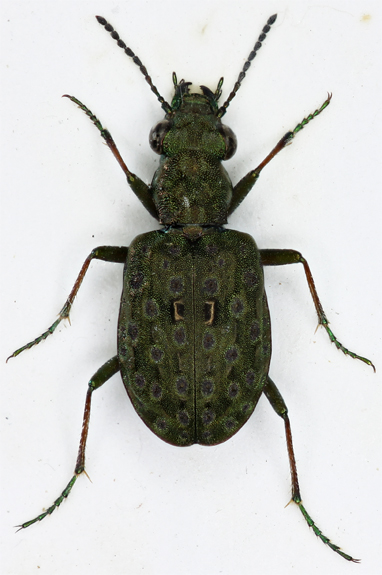
The four British Elaphrus species are very characteristic and can only be confused with each other.
6.5-8mm. Head including eyes wider than pronotum, mandibles prominent, antennae metallic green with red lustre. Pronotum quadrate, widest at middle and strongly sculptured. Head, thorax and elytra metallic green but usually with a weakly contrasting lustre. Each elytra with a shiny elevated field anterior of middle and other smaller ones arranged in longitudinal rows although these are variously obscured by puncturation and surface sculpture. Between these are large round depressions; violet and appearing edged with silver in strong light. Legs long, femora metallic green, strongly microsculptured, tibiae red but darkened and metallic at apex. Tarsi shining metallic green (cf E.cupreus), if there is doubt over the tarsal colour the prosternum needs to be examined, in riparius it is pubescent (cf cupreus), a condition also seen in E.lapponicum (Gyll) � but this is larger ≥8.5mm. Male with 3 dilated protarsal segments.
� Bower, T. 1974. Oecologia (Berlin) 14, 139-196
� A very local mountain species, Scottish highlands only (Luff).
Description from 4 Watford specimens at X20
See also ID Aids for a key to Elaphrus

Home